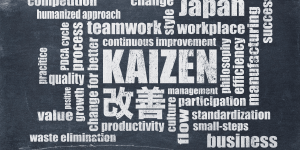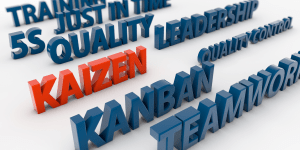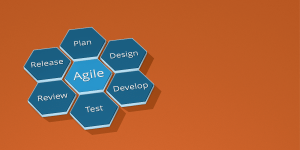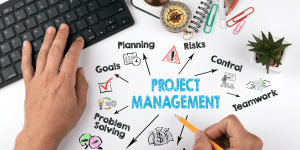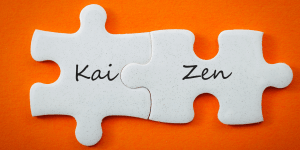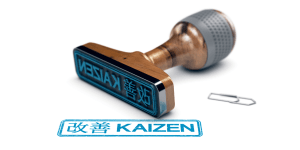In the realm of Agile methodologies, Scrum and Kanban stand out as prominent approaches shaping project management landscapes. While both emphasize iterative workflows and collaboration, they do so with distinct frameworks and goals. Scrum introduces structured sprints to regulate team efforts and deliverables, fostering a sense of urgency and achievement.
Scrum Framework Explained
Scrum is an iterative and incremental framework designed to deliver value quickly in the agile software development world. It provides a structured yet flexible approach to product development, allowing teams to adapt and respond to changes efficiently.
The Roles in Scrum
- Product Owner: The Product Owner represents the voice of the customer and ensures the team delivers value to the business. They prioritize the product backlog, define features, and make decisions on what needs to be built next.
- Scrum Master: The Scrum Master serves as a facilitator for the team, helping them understand and follow the Scrum framework. They remove obstacles, coach team members, and ensure that Scrum processes are being followed.
- Development Team: The Development Team consists of professionals who do the work of delivering a potentially releasable product at the end of each sprint. They collaborate to build, test, and deliver increments of the product.
Key Scrum Ceremonies
- Sprint Planning: At the beginning of each sprint, the team plans the work to be done and creates a sprint backlog.
- Daily Standups: Daily check-in meetings where team members discuss progress, plan for the day, and highlight any obstacles.
- Sprint Review: At the end of each sprint, the team demonstrates the work completed to stakeholders for feedback and validation.
- Sprint Retrospective: A reflective meeting held after each sprint to discuss what went well, what could be improved, and how to make the next sprint more effective.
Scrum emphasizes collaboration, transparency, and continuous improvement, making it a popular choice for teams aiming to deliver high-quality products efficiently. To delve deeper into the Scrum framework and its applications, you can explore resources like What is Scrum? – Scrum Methodology Explained.
In the fast-paced world of software development, mastering the Scrum framework can be a game-changer for teams seeking agility and innovation.
Key Differences Between Scrum and Kanban
When comparing Scrum and Kanban, it’s essential to understand the distinct approaches they take in various aspects of project management. Let’s delve into the key differences between these two methodologies.
Approach to Work
- Scrum: In Scrum, work is divided into fixed-length iterations called sprints, usually lasting 2 to 4 weeks. The team commits to delivering a set amount of work by the end of each sprint.
- Kanban: Kanban follows a continuous delivery model without predefined time frames. Work moves through a visual Kanban board, allowing for flexibility in task completion and workflow management.
Team Roles
- Scrum: Scrum teams are structured with specific roles, including a Scrum Master, Product Owner, and Development Team members. Each role has defined responsibilities within the framework.
- Kanban: Kanban does not prescribe specific roles like Scrum. Team members pull work from the backlog based on capacity and priorities, promoting a more fluid distribution of tasks.
Workflow Visualization
- Scrum: Scrum uses burndown charts and sprint backlogs to visualize progress and track work completed during each sprint.
- Kanban: Kanban relies on Kanban boards to visualize workflow stages, tasks in progress, and bottlenecks in real-time, providing a clear overview of work items.
Work Prioritization
- Scrum: Work prioritization in Scrum is often determined before each sprint during sprint planning, with the team committing to tasks based on priority.
- Kanban: Kanban prioritizes tasks dynamically as they move across the board, allowing for immediate adjustments to priorities based on evolving requirements and constraints.
Metrics and Measurements
- Scrum: Scrum measures performance through velocity, which calculates the amount of work completed in each sprint to predict future productivity.
- Kanban: Kanban focuses on cycle time and lead time metrics to measure the time taken to complete individual tasks and the overall delivery time, offering insights into workflow efficiency.
By understanding these differences in approach, team structure, visualization techniques, prioritization methods, and performance metrics, teams can choose the methodology that best aligns with their project requirements and organizational goals.
When to Choose Scrum
Scrum is a highly effective project management framework that can be particularly beneficial in certain scenarios and project environments. Let’s explore when choosing Scrum might be the right decision:
Fixed Deadlines
One of the key advantages of Scrum is its ability to thrive in situations with fixed deadlines. When your project has strict time constraints and specific delivery dates, Scrum’s iterative approach allows for continuous progress monitoring and adjustments, ensuring that you can meet deadlines without compromising quality.
Complex Projects
In complex projects where requirements are likely to evolve or are not fully defined from the start, Scrum offers a flexible and adaptive methodology. The iterative nature of Scrum enables teams to respond to changes quickly, prioritize tasks effectively, and deliver incremental value to stakeholders throughout the project lifecycle.
Cross-Functional Teams
Scrum is well-suited for projects that involve cross-functional teams with diverse skill sets. By encouraging collaboration, self-organization, and collective accountability, Scrum fosters a spirit of teamwork that maximizes the strengths of each team member. This synergy often results in innovative solutions and accelerated project delivery.
In conclusion, Scrum’s benefits shine in environments where fixed deadlines, complex project requirements, and collaboration among cross-functional teams are paramount. By embracing Scrum in these scenarios, organizations can enhance project efficiency, adaptability, and overall success.
For more insights on the benefits of Scrum in project management, you can explore resources like 6 Key Scrum Benefits in Project Management and 14 Scrum Advantages and Disadvantages for a deeper understanding of how Scrum can positively impact your projects.
When to Choose Kanban
Kanban can be a powerful tool in project management, particularly in situations that demand continuous delivery, handle variable workloads, or prioritize existing process improvements. Let’s delve into the scenarios where choosing Kanban over Scrum might be more advantageous:
Continuous Delivery Needs
One of Kanban’s strengths lies in its ability to facilitate continuous delivery. Teams working on projects where features or updates need to be released incrementally and regularly can benefit significantly from Kanban’s flow-based approach. By visualizing work in progress and limiting work items, Kanban ensures a steady flow of deliverables without the constraints of fixed time frames.
Handling Variable Workloads
In environments with fluctuating workloads or priorities, Kanban shines. The flexibility of Kanban allows teams to adapt quickly to changing demands by adjusting the number of items in progress based on current needs. Unlike Scrum’s fixed sprint durations, Kanban’s pull system enables teams to focus on completing tasks based on immediate requirements, making it an ideal choice for dynamic projects.
Process Improvement Focus
Kanban is also well-suited for teams aiming to enhance existing processes continually. By visualizing workflow stages and identifying bottlenecks, teams using Kanban can implement iterative improvements smoothly. This iterative approach to process refinement aligns with Kanban’s philosophy of incremental change, making it a preferred methodology for teams emphasizing continuous enhancement and efficiency gains.
By considering these factors and the adaptability of Kanban to different project demands, teams can leverage its principles to enhance workflow visibility, responsiveness, and overall productivity.
To learn more about the differences between Kanban and Scrum, check out this comprehensive resource that dives into key distinctions and guides on choosing the right approach based on project requirements.
Pros and Cons of Scrum
Scrum, a popular agile framework, comes with its own set of advantages and disadvantages. Let’s delve into the pros and cons of utilizing Scrum in your project management approach.
Pros of Scrum:
- Increased Productivity: By organizing work into manageable sprints, Scrum fosters a sense of urgency and promotes continuous progress.
- Enhanced Role Clarity: Clear roles within the Scrum team, including Scrum Master and Product Owner, help ensure accountability and streamline decision-making processes.
- Effective Feedback Loops: Regular sprint reviews and retrospectives facilitate rapid feedback, allowing for timely adjustments and improvements.
- Mitigation of Scope Creep: Scrum’s focus on delivering incremental value and adhering to predefined sprint goals minimizes the risk of scope creep derailing the project.
- Adaptability to Changing Requirements: The iterative nature of Scrum allows for flexibility in responding to evolving project needs, making it suitable for dynamic work environments.
Cons of Scrum:
- Complexity for Beginners: The Scrum framework may be challenging for teams new to agile methodologies, requiring time and effort to grasp its principles fully.
- Overemphasis on Meetings: The various Scrum ceremonies, such as daily stand-ups, sprint planning, and reviews, can sometimes lead to meeting fatigue and reduced actual development time.
- Potential for Overcommitment: Agile teams using Scrum may face pressure to commit to ambitious sprint goals, risking burnout and compromised quality.
- Dependency on Team Collaboration: Success in Scrum heavily relies on seamless collaboration among team members, which can be challenging in dispersed or less cohesive teams.
- Limited Flexibility in Scope: While Scrum promotes focus and prioritization, rigid adherence to sprint backlogs may restrict the ability to address urgent changes promptly.
When deciding whether to adopt Scrum, it’s crucial to weigh these pros and cons against your project’s specific requirements and team dynamics to determine the suitability and potential benefits of this agile methodology.
Pros and Cons of Kanban
Kanban, as a popular agile methodology, offers various benefits and drawbacks that project teams should consider when deciding on their workflow approach. Let’s delve into the pros and cons of using Kanban in project management.
Pros of Kanban
- Workflow Visualization and Transparency: Kanban provides a clear visual representation of work items moving through different stages of the process. This transparency enhances team collaboration and enables stakeholders to track progress effectively. (Source: Agile Fever)
- Flexibility and Adaptability: Kanban’s flexible nature allows teams to adapt to changing priorities and unexpected requirements swiftly. The ability to adjust the workflow based on current needs promotes agility and responsiveness within the team.
- Continuous Improvement: By emphasizing incremental changes and continuous delivery, Kanban fosters a culture of ongoing improvement. Teams can identify bottlenecks, optimize processes, and drive efficiencies over time.
- Reduced Work in Progress (WIP): Implementing work-in-progress limits in Kanban helps prevent overloading team members and ensures a steady flow of work. Limiting WIP encourages focus, improves productivity, and minimizes multitasking.
Cons of Kanban
- Challenges in Setting Timeframes: Kanban’s focus on flow and continuous delivery may pose challenges in setting specific timeframes for task completion. Without predefined deadlines, teams may struggle with prioritization and time management. (Source: Workamajig)
- Potential Lack of Timeboxing: Unlike Scrum, which emphasizes timeboxed iterations, Kanban lacks strict timeboxing elements. This absence of fixed time frames can make it challenging to create a sense of urgency and may lead to delays in project delivery.
- Role Definition Challenges: Kanban’s fluid structure may result in ambiguity regarding roles and responsibilities within the team. Without clearly defined roles, team members may face difficulties in understanding their duties and collaborating effectively.
- Limited Support for Dynamic Environments: In dynamic and rapidly changing work settings, Kanban may be less effective compared to methodologies designed for high variability. Adapting Kanban to frequent disruptions and unpredictable scenarios can be demanding.
In summary, while Kanban offers notable advantages in terms of flexibility, visualization, and continuous improvement, it also presents challenges related to time management, role clarity, and adapting to dynamic environments. Project teams should carefully weigh these pros and cons to determine if Kanban aligns with their project requirements and organizational objectives.
FAQs
What are the main differences between Scrum and Kanban boards?
Scrum boards are known for their methodical approach, requiring advanced preparation and organization. On the other hand, Kanban boards offer more flexibility to team members, although they may not provide the same level of structure as Scrum boards. Understanding these differences can help teams choose the right agile framework for their projects. For more in-depth insights on the distinctions between Scrum and Kanban boards, you can refer to this MiroBlog article.
Can Scrum and Kanban be used together?
While Scrum and Kanban are distinct agile methodologies, they can be combined in what is known as Scrumban. This hybrid approach allows teams to leverage the strengths of both frameworks. By integrating aspects of Scrum’s structured workflow with Kanban’s visual task management, organizations can tailor their processes to best suit their unique requirements. If you want to explore more about the combination of Scrum and Kanban, you can read this insightful Lucidchart article.
Are Scrum or Kanban boards more suitable for software development projects?
Software development teams often find both Scrum and Kanban beneficial for managing their projects. Scrum’s iterative approach and fixed timeframes can be advantageous for projects with defined scopes, while Kanban’s focus on continuous delivery and visual workflows suits projects that require more flexibility. Depending on the nature of the software development project, teams may choose either Scrum or Kanban to enhance their productivity and efficiency.
How do Scrum and Kanban handle changing requirements?
In Scrum, changing requirements are managed through the iteration planning process. Teams prioritize and commit to a set of user stories within a sprint, allowing for changes to be incorporated in subsequent sprints. On the other hand, Kanban’s continuous flow model accommodates changing requirements in real-time. Tasks can be added or reprioritized on the Kanban board as needed, providing teams with adaptability and responsiveness to evolving project needs.
What are the key metrics used in Scrum and Kanban?
Scrum commonly measures progress through metrics like sprint velocity, burndown charts, and sprint backlog health. These metrics help teams track their productivity and forecast project timelines. In contrast, Kanban relies on metrics such as cycle time, throughput, and blocked work items to monitor workflow efficiency and identify bottlenecks. By analyzing these key metrics, teams can optimize their processes and drive continuous improvement in their project delivery.
For further insights into the differences and applications of Scrum and Kanban boards, you can refer to this informative Coursera article.
Conclusion
In the debate of Scrum vs Kanban, the key takeaway is that the optimal choice depends on your project’s specific requirements and team dynamics. While Scrum provides a more structured framework with defined roles and processes, Kanban offers flexibility and visual management of tasks.
For some projects, a hybrid approach blending elements of both methodologies might be the ideal solution to maximize efficiency and adaptability. It’s crucial for teams to assess their unique needs and challenges to determine the most suitable Agile methodology. Remember, there is no one-size-fits-all answer, so tailor your approach to fit your project like a glove.


